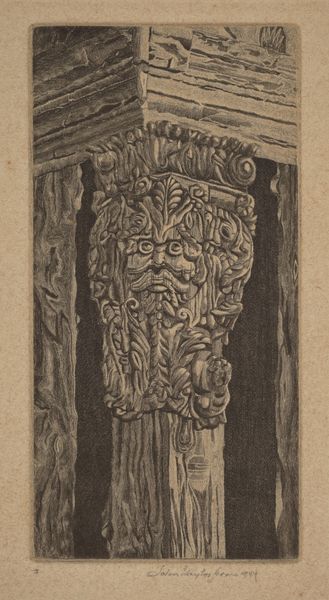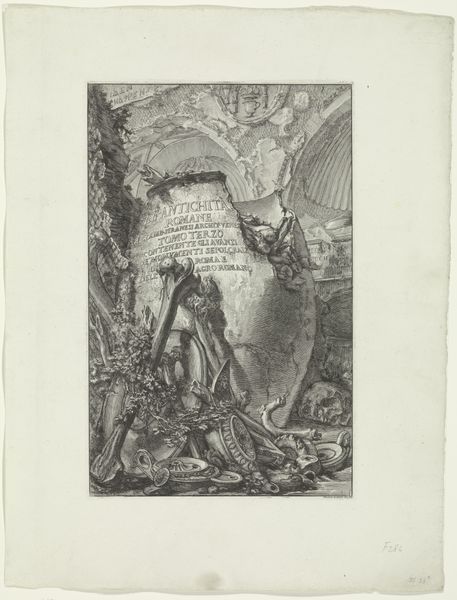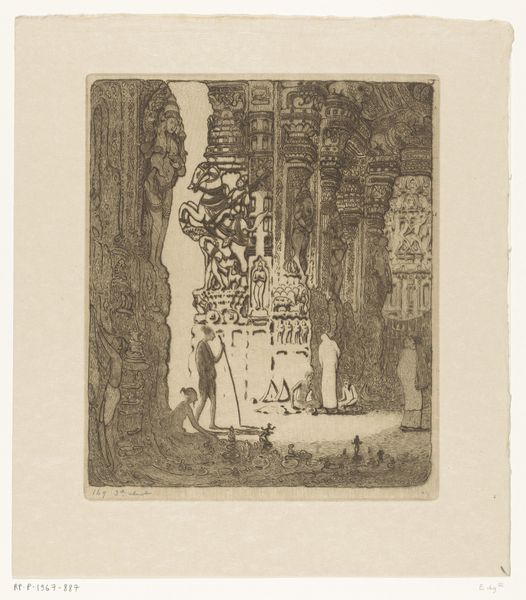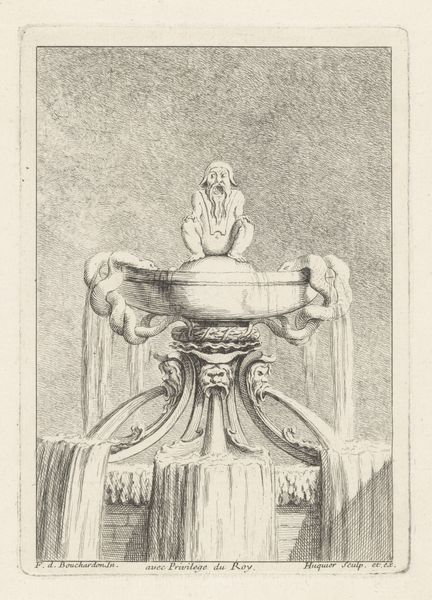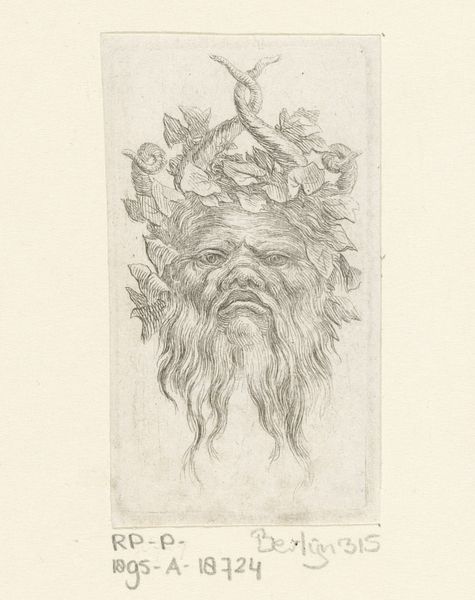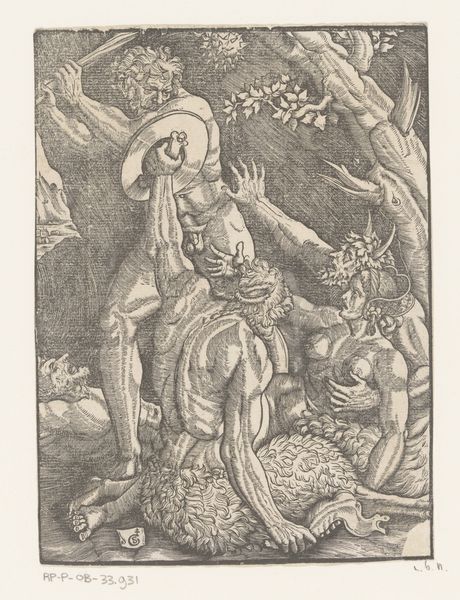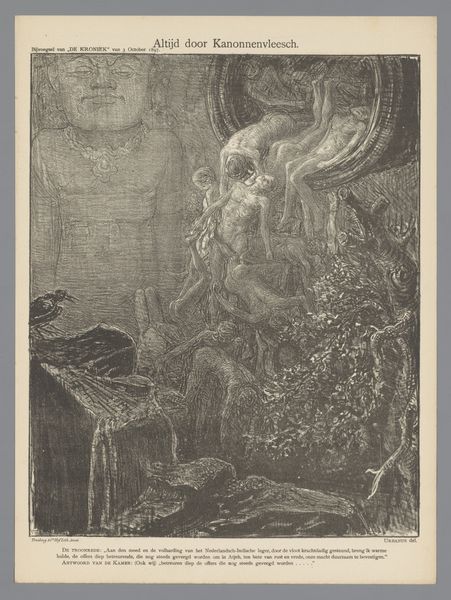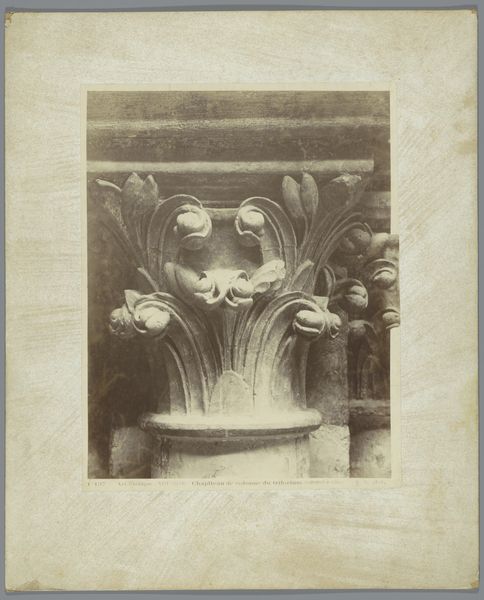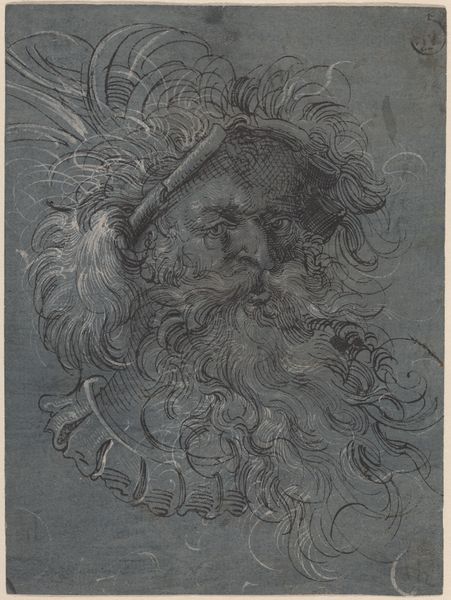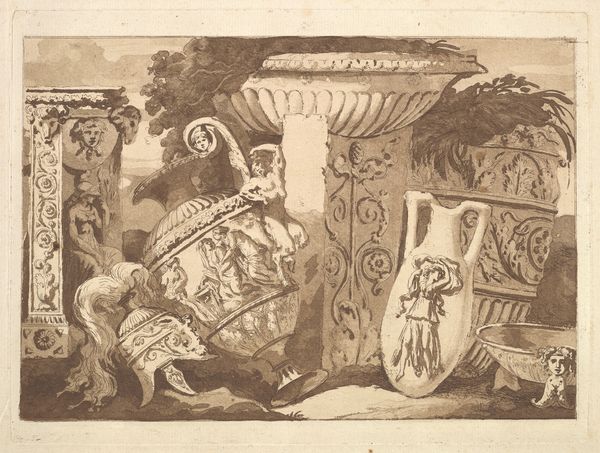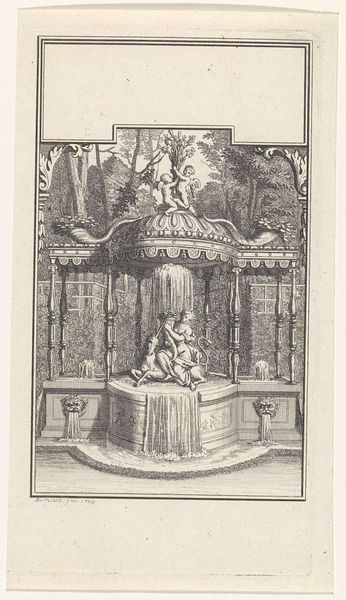
Fountain: Grotesque, Children and Basin (Une fountaine: Masque, enfants et bassin)
0:00
0:00
drawing, print, etching
#
drawing
# print
#
etching
#
landscape
#
figuration
#
academic-art
Copyright: National Gallery of Art: CC0 1.0
Alphonse Legros made this print of a fountain, using a technique called etching. Etching involves coating a metal plate with a waxy, protective layer, and then drawing through it with a sharp needle to expose the metal beneath. The plate is then immersed in acid, which bites into the exposed lines, creating grooves. These grooves hold the ink, which is then transferred to paper under high pressure, making the print. The process is crucial to understanding this image. Look closely and you can see the intricate network of fine lines that define the texture and form of the fountain, from the rough-hewn stones to the flowing water and the soft flesh of the children. The acid-biting process allows for a great deal of control and detail, giving the print a tactile quality. Consider the labor and skill involved in creating such an image. Legros wasn't simply recording a scene; he was translating it through a complex, multi-stage process, demonstrating how printmaking could be elevated to the level of fine art, challenging traditional hierarchies of art and craft.
Comments
No comments
Be the first to comment and join the conversation on the ultimate creative platform.


